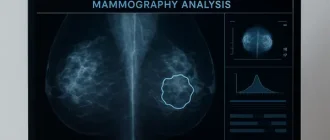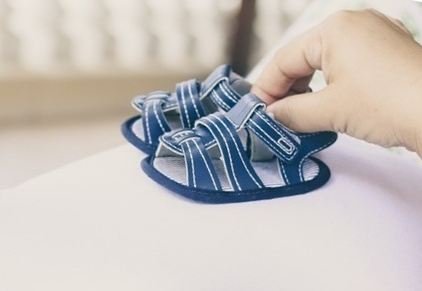Breast biopsy is a medical procedure used to diagnose breast cancer. It involves removing a small sample of breast tissue and examining it under a microscope to look for abnormal cells. With the advancements in medical technology and the increasing awareness about breast health, more and more women are opting for breast biopsies.
We will discuss everything you need to know about the process, types, risks, and benefits of breast biopsy. Whether you’re concerned about breast cancer or are scheduled for a biopsy soon, this post is perfect for you. So sit tight and let’s dive into the world of breast biopsy.
What is a Breast Biopsy?
A breast biopsy is a medical procedure that involves removing a small sample of tissue or cells from a suspicious area in the breast. This is done to determine if there are any cancerous or abnormal cells present. There are different types of breast biopsies, but the most common is a core needle biopsy, which uses a thin needle to take a sample of the breast tissue. Another option is a surgical biopsy, which involves removing a larger sample of tissue through a small incision.
It is essential to understand that a breast biopsy is not necessarily a diagnosis of breast cancer. Instead, it is a way to gather more information about the tissue to help diagnose or rule out cancer. A biopsy can also identify other types of breast conditions, such as cysts or fibroadenomas.
If you have a lump or abnormality in your breast, your doctor may recommend a biopsy. It is normal to feel anxious about the procedure, but rest assured that it is a routine and safe procedure. Your doctor will explain the process and answer any questions you may have to help you feel more comfortable.
In summary, a breast biopsy is a medical test that can help diagnose breast cancer or other breast conditions. There are different types of biopsies, and your doctor will determine which is best for your specific needs. Remember, a biopsy is a proactive step towards finding answers and getting the proper care that you may need.
When is a Breast Biopsy necessary?
When it comes to breast biopsies, they are not always necessary. A biopsy is only recommended if there is a suspicious finding on a mammogram, ultrasound or MRI, or a concerning clinical finding. A breast biopsy may also be recommended when a breast exam identifies a lump, growth or other abnormality. It’s important to note that not all breast lumps are cancerous, and in some cases, a biopsy is not needed at all.
In rare cases, surgery is needed to remove all or part of the lump for testing. This is called a surgical or open biopsy. However, most breast biopsies are done using a needle to remove a small amount of breast tissue. This tissue is then analyzed by a pathologist to determine if cancer or other abnormalities are present.
If breast cancer can’t be ruled out after additional imaging, a biopsy is necessary. Getting a biopsy can help your doctor diagnose or rule out breast conditions, including breast cancer. It’s important to remember that if your provider suggests that you have a breast biopsy, it doesn’t mean you have breast cancer.
In short, a breast biopsy is necessary when there is a suspicious finding or concerning clinical finding on a mammogram, ultrasound or MRI, or when a breast exam identifies a lump, growth or other abnormality. It’s important to trust your doctor’s recommendations and to understand that getting a breast biopsy can help diagnose or rule out breast conditions, including breast cancer.
Preparing for a Breast Biopsy
Before undergoing a breast biopsy, there are certain preparations that must be made. The patient should not eat or drink for several hours prior to the procedure if general anesthesia is involved. However, if only local anesthesia is used, then the patient can have a light meal beforehand. Products containing acetaminophen are the only pain relief medication that should be taken before the biopsy.
It is important that the patient wears loose, comfortable clothing and removes all jewelry before the procedure. They should also refrain from using talcum powder, deodorant, and bath oils on the day of the biopsy, as these can interfere with the results. If the patient has any allergies, they should report them prior to the biopsy.
During the actual biopsy, the needle is precisely guided to the correct location using ultrasound. A responsible adult must be present to drive the patient home, and they should wear a snug bra day and night for the first week to minimize bruising. Additionally, jewelry, necklaces, and earrings should be avoided for several days after the procedure.
By following these simple instructions, patients can ensure that they are adequately prepared for their breast biopsy. It is important to remember that while this procedure may seem daunting, it is a necessary step in identifying potential health concerns and ensuring optimal breast health.
Procedure Step-by-Step
The procedure for a breast biopsy can seem intimidating, but with proper preparation and understanding, it can be a straightforward process. After the patient has prepared for the biopsy by wearing comfortable and loose clothing and avoiding certain medications, the procedure can begin. The first step involves the patient lying on her back with her arm raised above her head. The breast is then cleaned with an antiseptic and numbing medication is injected into the breast tissue.
Next, a small incision is made, and a core needle is inserted into the breast tissue to remove a sample of tissue. This process may be repeated a few times to obtain multiple samples. Once the tissue has been collected, pressure is applied to the site to reduce bleeding and a small dressing is applied. An ice pack is then placed on the dressing to help with any discomfort or swelling.
After the biopsy, the samples are sent to a laboratory for analysis. The results of the biopsy can take a few days to come back, and the healthcare provider will inform the patient of the results. If cancer is detected, the healthcare provider will discuss next steps, which may include further testing and treatment.
It is important to follow all after-care instructions provided by the healthcare provider, including avoiding strenuous activity and keeping the biopsy site clean and dry. With proper care, the patient can recover quickly and move forward with any necessary treatment. The cost of a breast biopsy varies depending on the location and healthcare provider, and insurance coverage should be considered. Ultimately, a breast biopsy can provide valuable information and peace of mind for the patient’s health.
Cost
Cost is a crucial factor to consider when deciding to undergo a breast biopsy. The total expense of the procedure, including lab work, pharmacy charges, and sterile supplies, can amount to $18,000. However, the cost can vary depending on the type of biopsy done. Surgical biopsies, for instance, can cost thousands of dollars and are typically done in a hospital or surgical center. On the other hand, a core-needle biopsy costs as little as $510, making it a more affordable option.
For uninsured patients, hospitals may charge around $1,420 for the procedure. It’s important to note that prices can also differ based on the facility, as the average cash price for ultrasound-guided breast biopsy is $2,460.
While cost is a significant consideration, it’s still vital to prioritize one’s health and to get the necessary medical attention. Breast biopsy may help diagnose breast cancer, which is crucial for early detection and timely treatment. Overall, it’s important to discuss potential costs with medical providers, and inquire about any available payment plans or financial assistance programs.
Result by Age Explained
Breast biopsy results can vary based on age. According to studies, women aged 40 to 49 years have a 20% chance of receiving a breast cancer diagnosis post-biopsy, compared with a 32% chance for those aged 50 to 59.
Furthermore, women who undergo biopsies later in life have increased chances of receiving a cancer diagnosis, with the frequency increasing with each decade of life.
It is essential to note that every woman’s circumstances are different, and age alone does not determine biopsy results. It is crucial to discuss your results with your provider, who will provide personalized information and recommendations based on your individual situation. Remember to communicate with your provider and ask any questions or concerns you may have to fully understand your results and what they mean for your future health.
About the Author
Reyus Mammadli is the author of this health blog since 2008. With a background in medical and biotechnical devices, he has over 15 years of experience working with medical literature and expert guidelines from WHO, CDC, Mayo Clinic, and others. His goal is to present clear, accurate health information for everyday readers — not as a substitute for medical advice.







